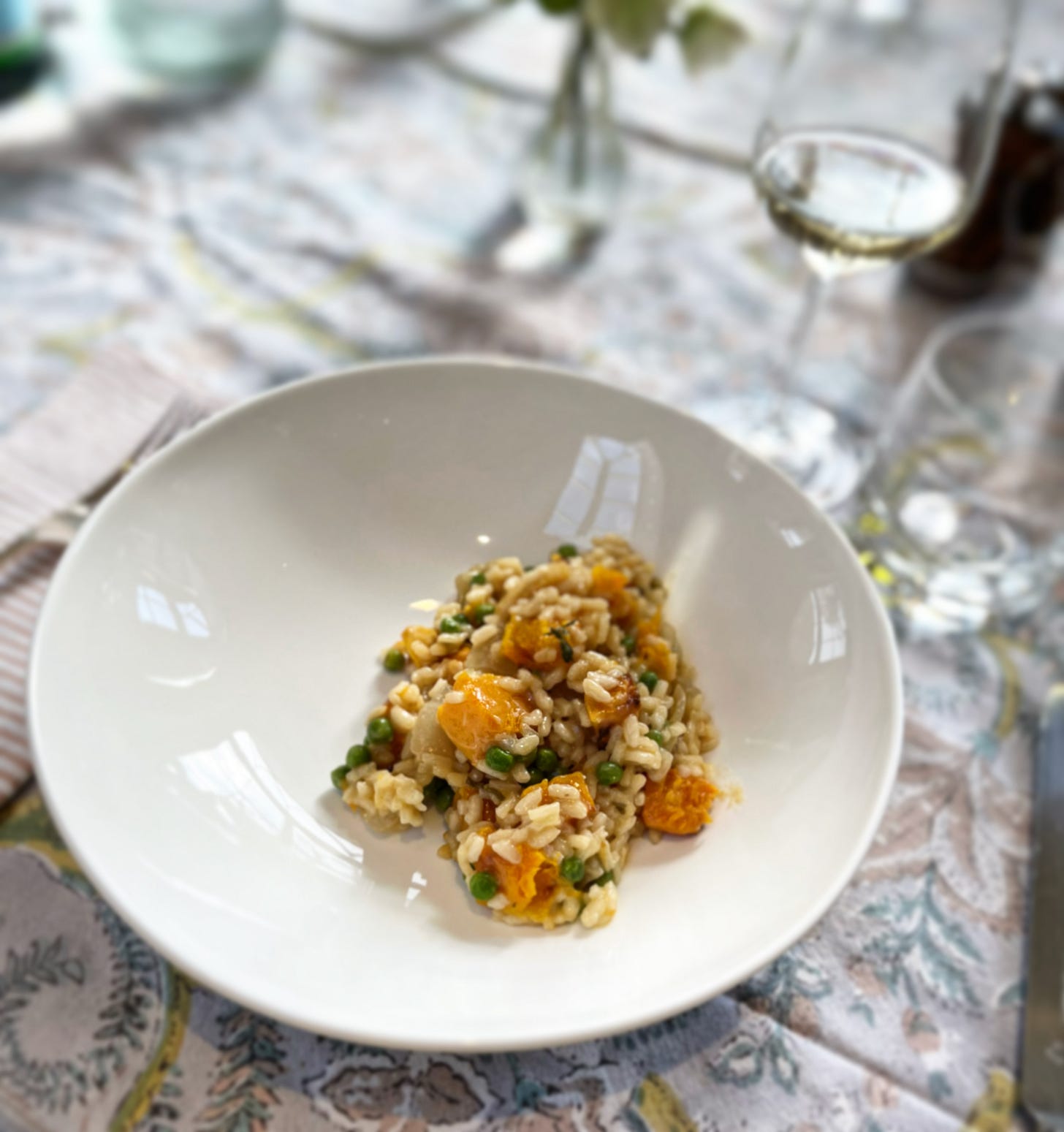As you start, so you go
and a recipe for Charlotte’s butternut squash risotto to share with friends
“Begin with the end in mind.”
Stephen Covey, The Seven Habits of Highly Effective People
Many students of business and of life are familiar with this now famous quote. First written in 1989, this is the second habit in Covey’s influential book; one of seven that, if applied, can lead to clarity of purpose, focus and successful outcomes.
As with many great ideas developed by visionary thinkers, the concept is simple. If I know where I want to go, then the actions I take should be in service to that goal. Covey adds that it’s important to be “principle-centred” - aligning our behaviours with beliefs and values keeps us on the right path.
But simple can often be really hard.
The best laid plans
Beginning with the end goal in mind makes perfect sense, especially for the planners amongst us. These are the people who make excellent project managers, are great at setting schedules, are never late and usually just get things done. I know: I’m married to one.
But if you’re anything like me, life and its many distractions can easily get in the way of goals. That end point, so clear and specific, can be as terrifying as it is motivating. When all those steps feel overwhelming, I go back to my own little mantra, breathe deep and begin again.
As you start, so you go
The first tiny steps we take are often the ones that set the tone for what’s to come. If we pause and reflect for a moment, they can be the most important of all.
These steps don’t necessarily signal the beginning of a journey to a great goal or vision. I rather think of them as micro moments; actions taken with thoughtful intent in the here and now. It could be the first words we choose in the heat of anger; taking the time to listen more and speak less; slowing down to notice the tiny shoots peeking out from the ground as we walk; reaching for a smile instead of our phones when we have a spare minute.
Being both in the present and being other-centred creates good energy that multiplies. In choosing to start as we mean to go on, we find the space to go forward with positivity. And, in the end, that’s a long-term goal worth having.
Charlotte’s butternut squash risotto
serves 6 as a starter, 4 as a main
We spent the weekend in Suffolk at the country home of Victoria and Charles. The setting couldn’t have been more lovely; a 400+ year old house, full of books and art and oodles of charm; an easy pace and schedule that allowed for plenty of catch up time, and plenty of delicious food. Victoria’s friend Charlotte made this super butternut squash risotto for dinner. It’s the perfect Saturday night dinner to have with dear friends and a wonderful bottle of wine.
Ingredients
1 butternut or acorn squash, peeled and diced
2 tablespoons olive oil, plus 1 tablespoon
1 tablespoon unsalted butter, plus 1 tablespoon
1 medium onion, peeled and diced
A handful of fresh sage leaves, chopped
1 heaping tablespoon thyme leaves
300 grams Arborio rice
⅓ cup dry white wine
4 cups quality chicken or vegetable stock
1 cup fresh or frozen peas, steamed
Juice of ½ a lemon
¼ cup grated Parmesan cheese, more for serving
Heat oven to 375F.
Toss the diced butternut squash with two tablespoons olive oil and 1 teaspoon salt and roast for 30 minutes until softened and slightly charred. Mash about ⅓ of the squash and leave the rest in chunks. Set aside.
Put chicken stock in a medium saucepan and heat to simmering.
In a large deep-sided skillet or large saucepan, melt one tablespoon butter in one tablespoon of olive oil over medium heat, until butter foams. Add the diced onions, sage and thyme leaves and sauté until onion is softened, about 5-7 minutes. Don’t let the onion brown.
Add the Arborio rice and stir to coat with the onions and herbs. Toast for 2 minutes more. Add the white wine and cook until the wine is almost evaporated, stirring constantly.
Add a ladleful of stock and wait until it’s been fully absorbed before adding another, stirring constantly and adding ladlefuls of stock until the rice is cooked; it will need about 16 to 18 minutes. At the 10 minute mark, stirring in the butternut squash and continue cooking until the rice is done. Stir in the peas.
Add the Parmesan cheese, 1 teaspoon salt and the lemon juice. Stir to combine and let the flavours develop for a couple of minutes. Taste and adjust the seasonings, adding more salt as desired. Serve with extra Parmesan on the side.





